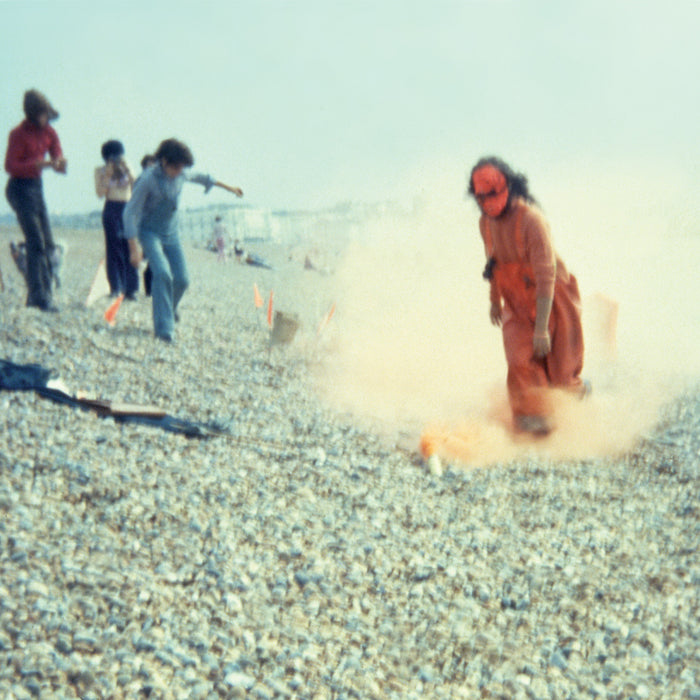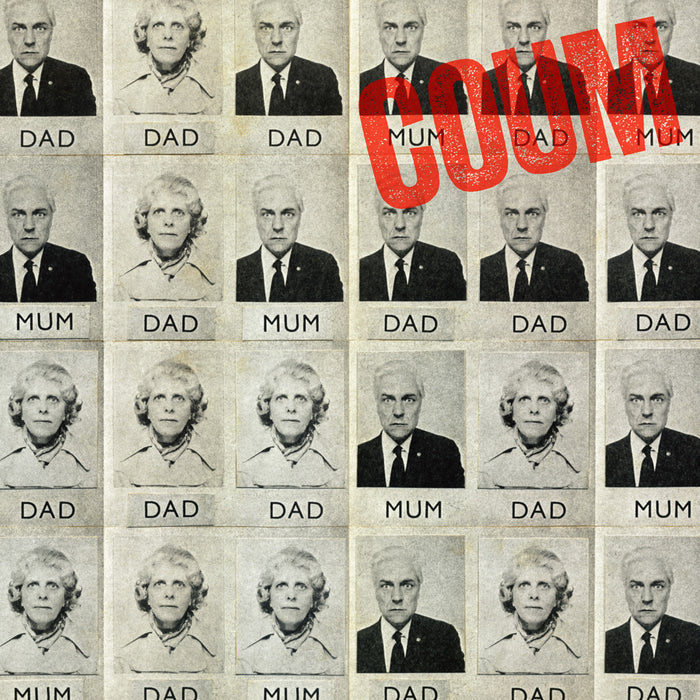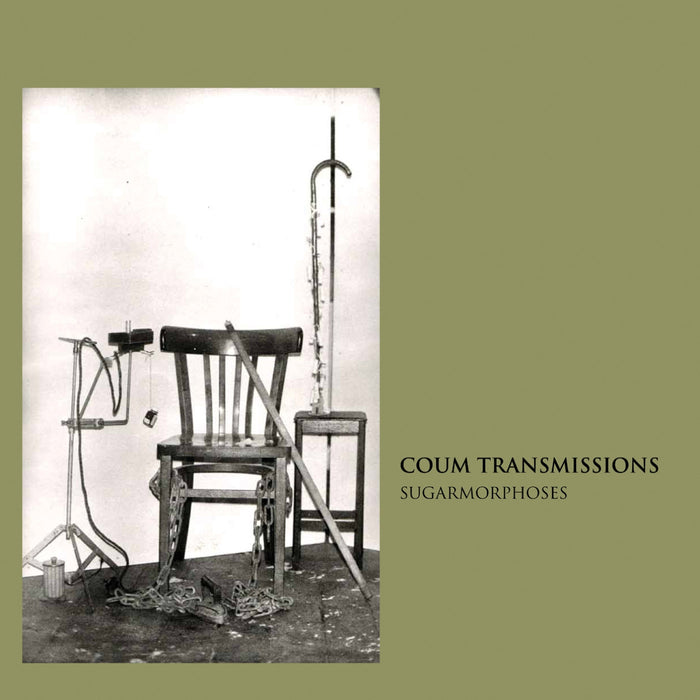About COUM Transmissions
COUM Transmissions were a music and performance art collective who operated in the United Kingdom from 1969 through to 1976. Influenced by the Dada artistic movement, COUM were openly confrontational and subversive, challenging aspects of conventional British society. Founded in Hull, Yorkshire by Genesis P-Orridge, other prominent early members included Cosey Fanni Tutti and Spydeee Gasmantell (also at school with Genesis P-Orridge). Part-time member included Menzies, Haydn Robb, Les Maull (aka The Reverend Lelli), Ray Harvey and Fizzy Paet. Later members included Peter "Sleazy" Christopherson and Chris Carter, who together with P-Orridge and Fanni Tutti went on to found the pioneering industrial band Throbbing Gristle in 1976.
The founder of COUM Transmissions was Genesis P-Orridge (1950–2020), a Mancunian by birth who later founded Throbbing Gristle and other projects. A university student who had developed a great interest in the radical counter-culture, P-Orridge had dropped out of h/er studies at the University of Hull and spent three months living in the Transmedia Explorations commune in North London during late 1968. The commune members adhered to a strict regime with the intention of deconditioning its members out of their routines and conventional behaviour; they were forbidden from sleeping in the same place on consecutive nights, food was cooked at irregular times of the day and all clothing was kept in a communal chest, with its members wearing something different on each day. P-Orridge stayed there for three months, until late October 1969, when s/he decided to leave; s/he was angered that the commune's leaders were given more rights than the other members, and believed that the group lacked an interest in music.
P-Orridge first developed the concept for COUM on a family trip to Wales, during which s/he was sitting in the back of the car when s/he "became disembodied and heard voices and saw the COUM symbol and heard the words 'COUM Transmissions'." Returning home that evening, s/he filled three notebooks with various artistic thoughts and ideas, influenced in part by h/er time with Transmedia Explorations. In December 1969 s/he returned to Hull to meet up with h/er friend John Shapiro, with whom s/he would turn COUM Transmissions into an avant-garde artistic and musical troupe. They initially debated as to how to define "COUM", later deciding that like the name dada it should remain open to interpretation. P-Orridge designed a logo for the group, consisting of a semi-erect penis formed out of the word COUM with a drip of semen coming out of the end, while the motto "YOUR LOCAL DIRTY BANNED" was emblazoned underneath. Another logo designed by Megson consisted of a hand-drawn seal accompanied by the statement "COUM guarantee disappointment"; from their early foundation, the group made use of wordplay in their artworks and adverts.
In December 1969, P-Orridge and Shapiro moved out of their flat and into a former fruit warehouse in Hull's docking area, overlooking the Humber. Named the Ho-Ho Funhouse by P-Orridge, the warehouse became the communal home to an assortment of counter-cultural figures, including artists, musicians, fashion designers and underground magazine producers. At Christmas 1969, a woman named Christine Carol Newby (1951–) moved into the Funhouse after being thrown out of her home by her father. Having earlier befriended P-Orridge at an acid test party, Newby would move into h/er room at the Funhouse, adopting the nom-de-guerre Cosey Fanni Tutti after the title of Amadeus Mozart's 1790 opera Così fan tutte. Joining COUM, Tutti initially helped in building props and designing costumes, and was there when the group began changing its focus from music to performance art and more theatrical happenings; one of these involved the group turning up to play a gig but intentionally not bringing any instruments, something P-Orridge considered "much more theatrical, farcical and light-hearted" than their earlier performances.
It had a rotating membership, and included both intellectual and criminal elements and existed formally from 1969 until 1976. In that year, Genesis & Cosey exhibited at London's Institute of Contemporary Arts in a show called Prostitution, which consisted of explicit photographs of lesbians, assemblages of rusty knives, syringes, bloodied hair, used sanitary towels, press clippings and photo documentation of COUM performances in Milan and Paris. There was a lot of outrage expressed by London newspapers and UK politicians, including Tory MP Nicholas Fairbairn, who referred to COUM as the "wreckers of Western civilization".
Releases
-
10.2013
-
08.2009
-
08.2011


